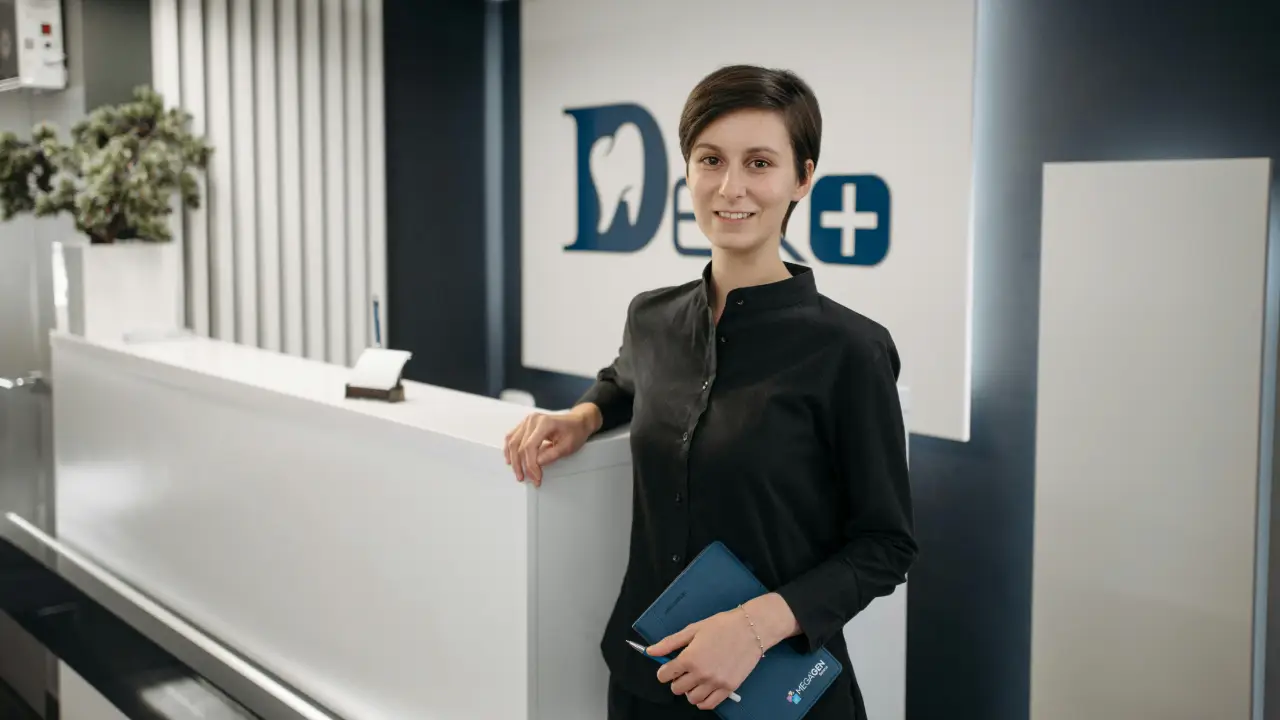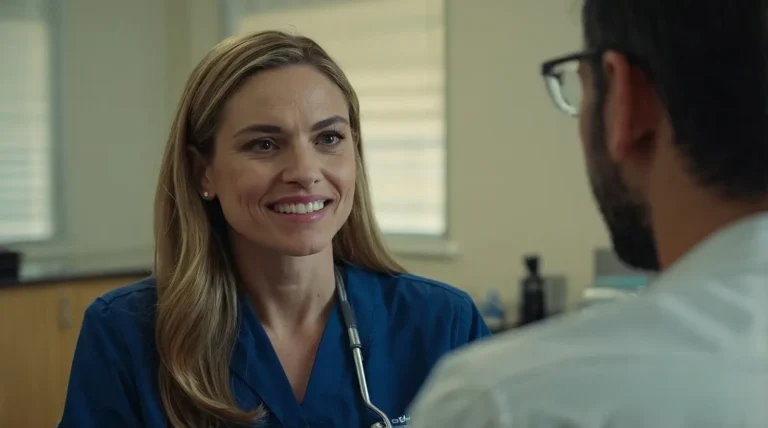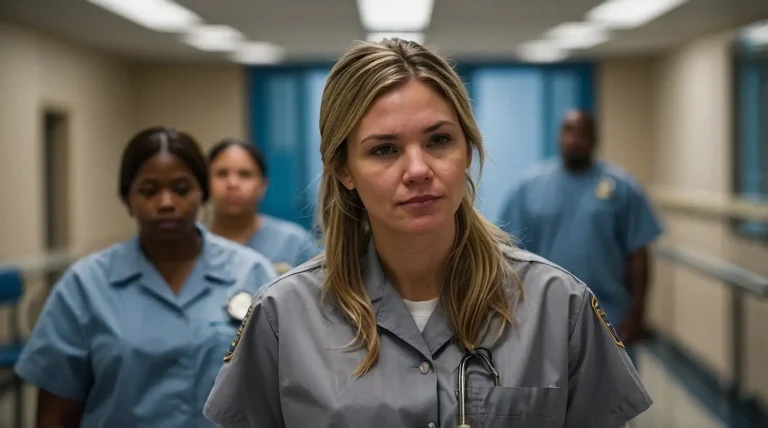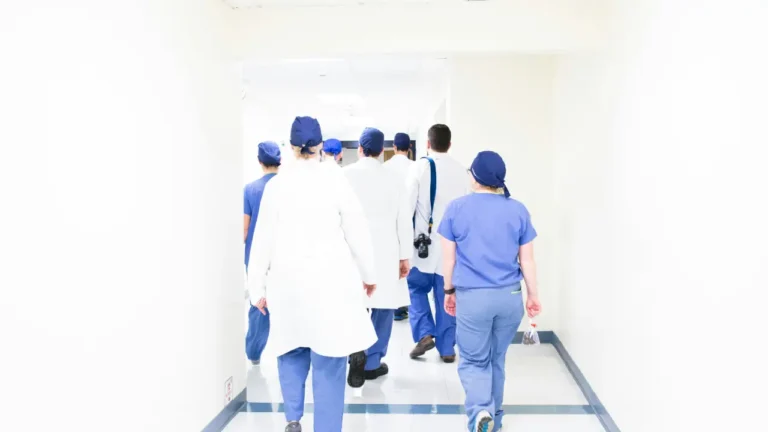When preparing for a medical receptionist interview, choosing the right outfit can be crucial to making a positive first impression. The role of a medical receptionist is pivotal, requiring professionalism, attention to detail, and empathy—all qualities that can be reflected in your attire. Here’s an in-depth guide to help you dress to impress for this important interview.
Why Dressing Appropriately Matters for a Medical Receptionist Interview
Dressing appropriately helps convey professionalism, reliability, and respect for the healthcare environment. Medical receptionists represent the face of the practice, often being the first point of contact for patients. Your attire can influence how potential employers perceive your understanding of the role’s demands.
Understanding the Dress Code in Healthcare Environments
In healthcare environments, the dress code leans toward conservative, professional, and practical styles. As a medical receptionist, your outfit should align with these expectations, balancing professionalism with functionality.
Business Casual or Business Formal?
Most medical receptionist roles favor a business casual approach, although some environments may prefer a more formal dress code. For an interview, it’s generally safer to lean towards business formal to convey respect and seriousness about the role. Here’s a breakdown of both styles:
- Business Formal: Could involve a suit or a professional dress, usually in neutral or muted tones.
- Business Casual: Includes a conservative blouse, dress pants or skirt, and closed-toe shoes.
Colors to Wear and Avoid for a Medical Receptionist Interview
In healthcare, color choices should be conservative, with neutral or pastel tones generally being the most appropriate. Bright colors and patterns may be seen as distracting and may not align with the calm and professional tone of a medical office.
Best Colors to Wear
Neutral shades like black, gray, navy, and white are typically best for a medical receptionist interview. These colors project professionalism and reliability, two traits valued in healthcare roles.
- Gray: Communicates balance and professionalism.
- Navy Blue: Seen as trustworthy and reliable.
- Black: Classic and authoritative, though best paired with lighter shades to soften the look.
Colors to Avoid
Colors like bright red, neon shades, or bold patterns can come off as too flashy for a medical receptionist position. While these colors may work in other industries, they can be overwhelming in a healthcare setting.
Recommended Outfits for Women
For women, a conservative blouse or shirt paired with dress pants or a knee-length skirt creates a polished look suitable for a medical receptionist interview. Aim to strike a balance between professional and approachable.
Blouses and Shirts
Opt for blouses in neutral colors, such as white, beige, or soft pastels. These hues are versatile and appropriate for the healthcare setting. Avoid plunging necklines or overly fitted tops.

Dress Pants and Skirts
Dress pants or a knee-length skirt are ideal choices to pair with a blouse. Pants should be well-fitted but not tight, and skirts should be knee-length to maintain a professional appearance.
Footwear for Women
Closed-toe shoes with a modest heel or flats are ideal. Avoid high heels or open-toe shoes, as they may not be considered suitable for a healthcare setting.
Recommended Outfits for Men
Men should consider a button-down shirt paired with dress pants and closed-toe shoes. The goal is to present a clean, professional look that communicates competence and respect for the medical field.
Button-Down Shirts
Choose a button-down shirt in neutral colors like white, light blue, or gray. Patterns, if any, should be subtle, such as a thin stripe.

Dress Pants
Dress pants in dark colors, like navy or black, are appropriate for a medical receptionist interview. Ensure the pants are pressed and properly fitted to enhance a polished look.
Footwear for Men
Closed-toe dress shoes in brown or black are recommended. Shoes should be polished and free from scuff marks, as attention to detail matters.
Grooming and Accessories Tips
Attention to grooming is essential, as it reflects your commitment to cleanliness and professionalism. Medical offices require high standards of hygiene, so it’s important to present yourself neatly.
Hairstyle and Makeup Tips for Women
Women should opt for a neat, low-maintenance hairstyle, keeping hair away from the face. Makeup should be subtle, ideally with neutral tones that enhance your features without overpowering them.
Hairstyle Tips for Men
Men should keep their hair trimmed and well-groomed for a professional look. Facial hair, if worn, should be neatly trimmed.
Minimal Jewelry and Accessories
Jewelry should be minimal and understated, such as small stud earrings or a simple watch. Large or noisy jewelry can be distracting and may not align with the professional tone of a medical office.
Tips for Final Touches Before the Interview
The final touches before your interview can make a big difference in creating a strong first impression. Check your outfit, ensure all details are in place, and prepare yourself to exude confidence.
Check for Wrinkles and Stains
Make sure your clothing is clean and wrinkle-free, as this reflects attention to detail. A quick final check before entering the interview can help you spot any last-minute issues.
Consider Bringing a Professional Bag
A simple, professional bag can complete your look and keep essentials like resumes and notepads organized. Avoid flashy designs or oversized bags that may detract from your professional appearance.
Body Language and Non-Verbal Cues
Your body language can reinforce the professionalism and warmth that your outfit projects. Make eye contact, smile, and maintain good posture to show that you are approachable and attentive.
Smile and Maintain Eye Contact
Smiling and making eye contact can help build rapport with your interviewer. This is especially important for a receptionist role, as it shows you can engage warmly with patients.
Be Mindful of Posture
Sitting or standing with good posture exudes confidence and attentiveness. Slouching or appearing too relaxed can be seen as unprofessional.
If you’re also considering a path in healthcare beyond administrative roles, check out our guide on What to Wear to a Medical School Interview for more tailored tips on interview attire in clinical settings
Dos and Don’ts of Interview Attire for a Medical Receptionist
Certain do’s and don’ts can help ensure your outfit aligns with the expectations of a medical receptionist role. Following these tips can increase your chances of making a positive impression.
Dos
- Do dress conservatively, favoring business casual or formal attire.
- Do select neutral colors to convey professionalism.
- Do ensure your clothing is clean, wrinkle-free, and properly fitted.
- Do choose minimal accessories and closed-toe shoes.
Don’ts
- Don’t use heavy perfumes or colognes, as strong scents may be disruptive.
- Don’t wear bright or flashy colors that may be distracting.
- Don’t wear overly casual items like jeans, t-shirts, or sneakers.
FAQs On What To Wear to an Interview for Medical Receptionist
A suit can be appropriate if you’re unsure about the dress code, especially for more formal healthcare settings. However, in most cases, business casual attire (like a blouse with dress pants or a knee-length skirt) is also suitable and may feel less formal but still professional.
It’s usually best to avoid wearing scrubs to the interview, even if they are required for the role. Instead, dress in business casual or business formal attire to make a polished, professional impression. Save the scrubs for after you’re hired.
Jeans are not recommended for a medical receptionist interview. Jeans, even if paired with a nice top, are considered too casual for the professional image expected in a healthcare environment.
Closed-toe shoes with a low heel or professional flats are ideal. Avoid open-toe sandals, sneakers, or excessively high heels, as these may not align with the professional tone of a medical office.




